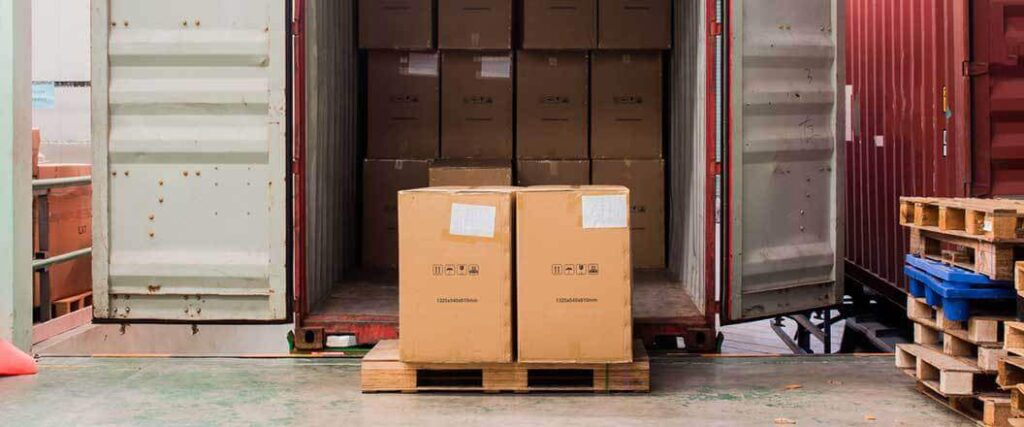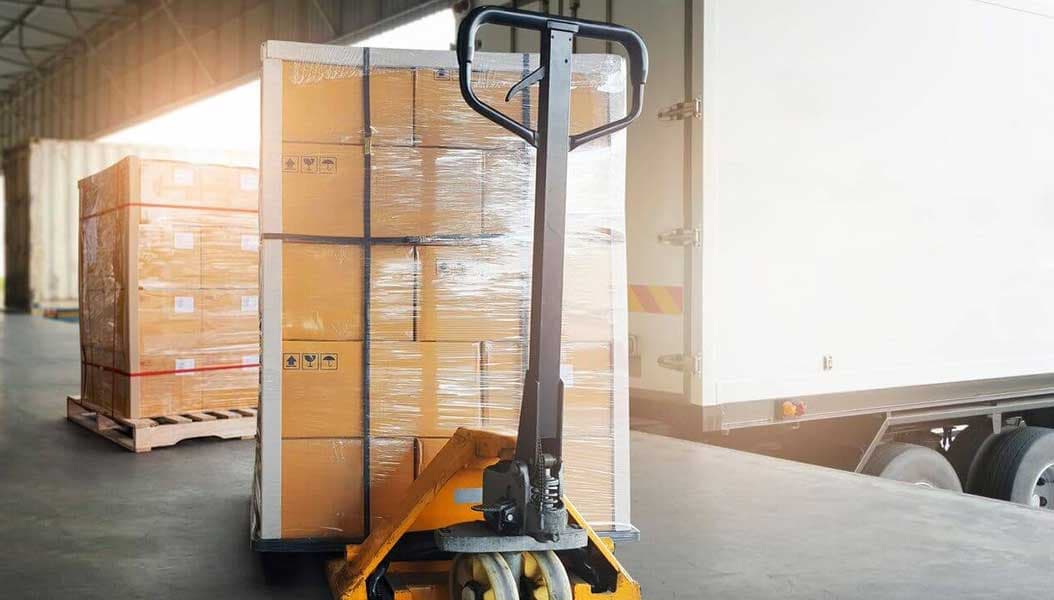Retail consolidation is a way to ship more products with fewer trips. This can save money on fuel and labor costs, and ensure that customers receive their products in a timely manner. However, implementing this process can be challenging. It’s important to plan carefully and be flexible. The rewards of retail consolidation are worth the effort, as businesses can save money and improve efficiency.
According to the Council of Supply Chain Management Professionals (CSCMP), retail consolidation streamlines shipping by merging smaller loads into larger ones. The benefits of this practice include reduced shipping costs, increased efficiency of operations, and more consistent, predictable shipping.
In this article, we’ll take a detailed look into retail consolidation and how it streamlines logistics in e-commerce. You’ll also learn how Transload Services USA can improve your business’s logistic process.
What is Retail Consolidation?

Retail consolidation groups various smaller shipments into a larger one for more affordable transportation and delivery. The process improves retail supply chain efficiency, leading to lower transportation costs and better product availability for customers.
However, that's just a general overview. To get a better grasp of why this strategy works, we should review why it was created in the first place. Like most new processes, it came about as a matter of necessity.
Retail Consolidation Unpacked
In the past, it was common for small shipments from multiple suppliers to arrive piecemeal at retailers. This is what many recognize as a traditional LTL (Less than Truckload) approach to doing things.
For example, one truck for paper goods, one for electronics, another for consumables, and so on. Different brands of the same product would also arrive through multiple LTL shipments throughout the week. If tracking multiple small shipments sounds frustrating to you, you can see why a solution was needed.
As retailers began to offer a wider variety of products, this system proved to be too chaotic. It was more logical to have a single large shipment rather than several smaller ones.
Retailers began to consolidate these shipments at a distribution center, then ship them to the final destination. Hence, retail consolidation came into being. It’s now the norm among the biggest and most successful storefronts.
Looking for more general information about shipment consolidation? Read our article here.
The Advantages of Retail Consolidation Services
Retail consolidation doesn’t just simplify the shipping process: it also offers the following advantages.
- Reduced Shipments: Less money spent on multiple shipments means lower costs. Whether you pass those savings on to the customer or re-invest in your business, this is a big deal.
- Streamlined Operations: More predictable and reliable delivery times lead to happier customers. Happy customers tend to improve your customer retention rates and leave more favorable reviews.
- Improved Supply Chain Flexibility: Businesses are able to respond more quickly as the market fluctuates. This is a huge advantage in the rapidly-changing world of e-commerce.
By addressing these critical areas, retail consolidation services help businesses streamline operations. In turn, these businesses can focus on customer satisfaction and product improvements. After all, no one starts an e-commerce venture to get bogged down in logistics.
To further drive home the advantages of retail consolidation, let’s examine the costs associated with freight shipping.
Reduce your freight costs even more with rail to truck transloading.

Breaking Down the Cost of Transportation in Supply Chain
There are several elements that make up transportation costs. Understanding them is an important part of controlling your shipping budget.
Let's take a deeper look at these various elements:
- Fuel: This is the most obvious cost. Diesel powers the supply chain, and the price of fuel is a significant portion of transportation costs.
- Vehicle Maintenance and Depreciation: Like most things, vehicles wear down over time. They need regular maintenance and eventual replacement. These costs are all part of your transportation expenses.
- Insurance and Licensing: Transporting goods involves risk, and insurance is there to mitigate that risk. The cost of insuring vehicles and cargo, along with licensing fees, are all part of your total transportation costs.
- Warehousing and Storage: Sometimes goods need to be stored during transit. The costs of warehousing can add up quickly, driving transportation costs to higher numbers.
- Taxes and Duties: Depending on the nature and destination of your goods, you may need to pay customs duties, import taxes, and other fees.
- Administration: Behind the scenes, administrators schedule shipments, handle paperwork, and ensure compliance with regulations. These tasks contribute to your overall transportation costs.
On average, consignors can save up to 30 percent when using retail consolidation vs LTL shipping. Let’s break down what those savings look like.Potential Savings From Retail Consolidation
| Freight Weight | LTL Rate* | LTL Cost | Retail Consolidation Cost |
| 1,000 lbs | $50 per hundred pounds | $500.00 | $350 |
| 2,500 lbs | $50 per hundred pounds | $1,250 | $875 |
| 5,000 lbs | $50 per hundred pounds | $2,500 | $1,750 |
*Based on estimated rates
Considering these expenses are part of week to week spend, it’s easy to see how the savings add up over time. So how exactly does consolidation lead to these savings? We can answer that question by examining some details of the process.
How Retail Consolidation Reduces Transportation Costs

The retail consolidation process has many characteristics that lead to lower shipping costs. Depending on how a business sets up their logistics, some of these have a greater impact than others.
The more common cost savings tend to include:
- Reduced Number of Deliveries: By combining smaller shipments into a single large one, the overall number of deliveries goes down. Fewer deliveries mean fewer transportation charges. That’s more money to put back in your coffers.
- Improved Truckload Utilization: Freight consolidation makes better use of available truck space. More products are packed into each truck, so the cost per unit decreases. It's like getting a group discount on your freight!
- Lowered Warehousing Costs: With fewer shipments, there's less need for warehousing space, resulting in even more savings. You’ll save money on storage and inventory management.
- Less Idle Time: By reducing the number of deliveries, there are fewer delays and less idle time for trucks. Less idle time can mean better lead time because trucks stay on the move.
- Reduced Emissions: While this might not reduce monetary costs directly, reducing your carbon footprint can lead to long-term cost savings. It’s also good for the environment.
With retail consolidation, you're not just cutting costs, you’re also building a more eco-conscious business model. Additionally, it makes it easier for businesses to achieve high marks in an important key performance indicator called OTIF.
What is On-Time In-Full (OTIF) in the Supply Chain?

OTIF might sound like just another business acronym, but in the retail world, it's a it’s a big deal. OTIF is a KPI, or key performance indicator, in supply chain management that measures the efficiency of deliveries. The higher the percentage of OTIF deliveries, the better.
It's all about getting the right product to the right place in a timely manner. How does retail consolidation tie in with OTIF?
Understanding OTIF in Retail Consolidation
Retail consolidation works behind the scenes to make OTIF easier to achieve. Retail distribution centers play a large role in making sure the consolidation process is working right
Here’s how:
- Fewer Shipments: Since consolidation minimizes the total number of shipments, it also means less can go wrong. Less is more when it comes to improving OTIF stats.
- Easier to Manage: One consolidated shipment is easier to manage than multiple smaller ones. It's easier to track, easier to handle, and less prone to errors.
- Cost Savings: As we've explained, retail consolidation brings down transportation costs. With more resources available, businesses can invest in reliable delivery services to ensure on-time arrivals.
- Better Supplier-Retailer Relationships: When suppliers can consistently deliver on-time and in-full thanks to retail consolidation, it strengthens their relationships with retailers. This trickles down the supply chain, resulting in smooth operations.
OTIF is one of the most important KPIs in supply chain management. A big part of retail consolidation's positive impact on OTIF comes from the practice of transloading. Let’s learn more about this alternative to regular warehousing.

The Role of Transloading in Retail Consolidation
When we speak of retail consolidation, it's important to acknowledge the role that transloading plays. This practice is a core element of retail consolidation.
Transloading involves the direct transfer of goods from one mode of transportation to another during the delivery journey. This contrasts with traditional warehousing, where goods are stored for long periods of time before being picked and packed for shipment.
Transloading can involve any method of intermodal transportation. Trains, ships, and air freight are all part of the process. However, retail consolidation usually involves several small truck shipments being moved to one larger trailer.
Now, let's take a closer look at the key elements of transloading:
- Cross-Docking: This practice involves unloading goods from an inbound delivery vehicle and loading them directly onto outbound vehicles. Bypassing the pick and pack process allows cross-docking to accelerate delivery.
- Optimized Delivery: Transloading facilities often have the advantage of being situated at strategic locations. This enables the effective movement of goods to various destinations, and improved delivery schedules.
- Flexible Storage: While transloading typically emphasizes swift transfer of goods, these facilities also offer some short-term storage options. This is useful when there's a need to temporarily hold goods due to schedule or route changes.
Looking for a deep dive on cross-docking? Check out our article here.
Transloading and retail consolidation complement each other in a way that benefits both processes. Together, they offer an affordable solution to manage the intricacies of a supply chain. The result is a streamlined process that can adapt to changing demands. Given how much e-commerce has changed in just the last few years, adaptability is vital.
Why Transload Services USA is Your Go-To for Retail Consolidation Services
The benefits of retail consolidation are obvious, and with professional assistance, you can reap those benefits with ease. At Transload Services USA, we offer reliable consolidation services tailored to your business needs.
In addition, look to us for help with:
- Transloading
- Cross Docking
- Freight Rework
- And more
Are you ready to take your shipping to the next level? Call us at (352) 282-4588 or contact us directly through our site today and put our expertise to work for you and your business.

